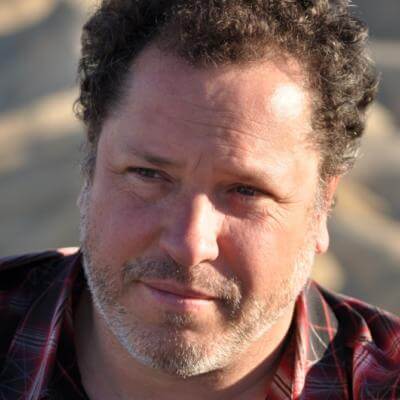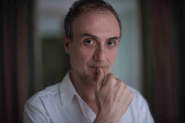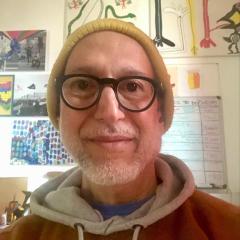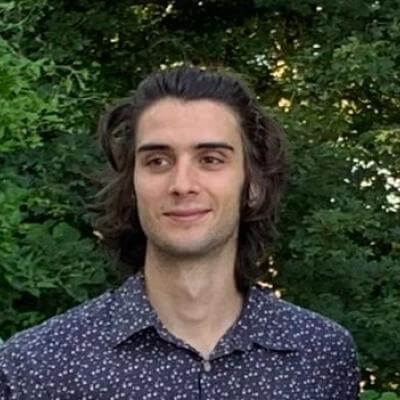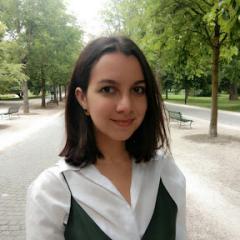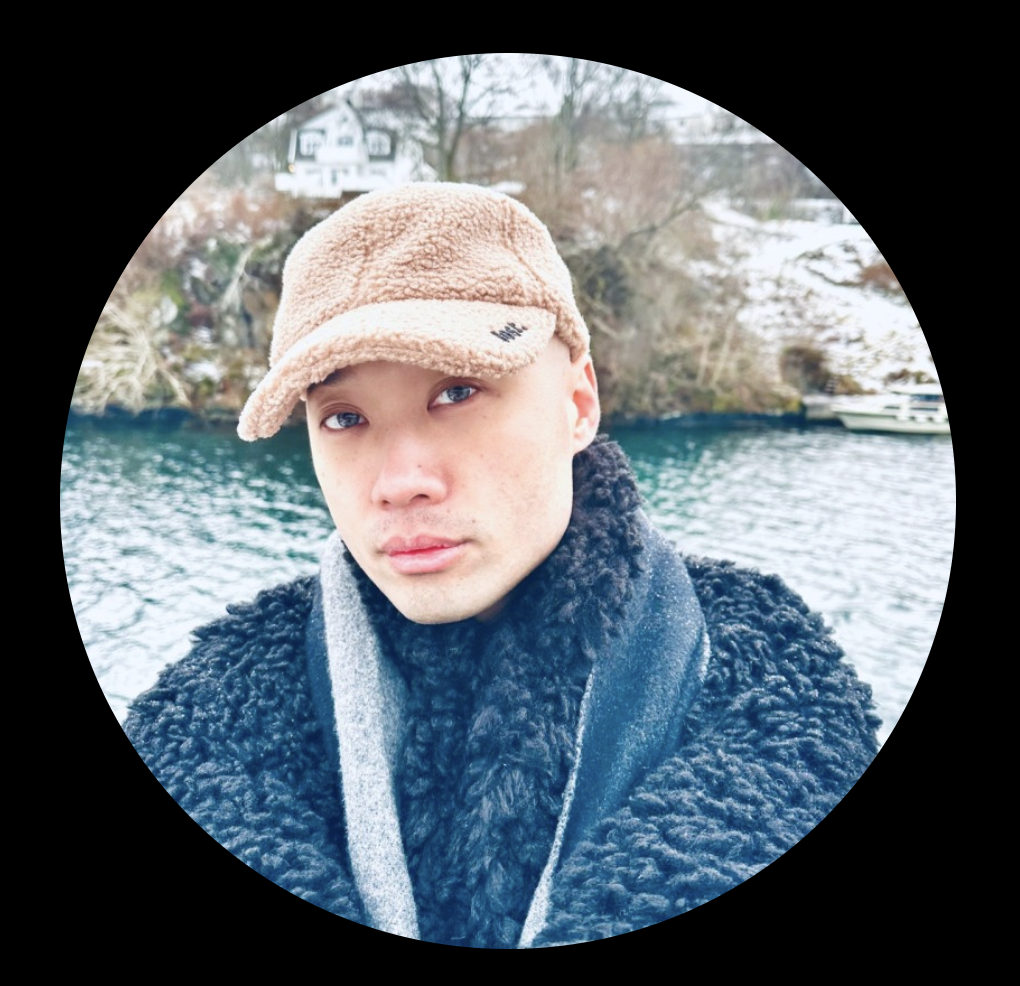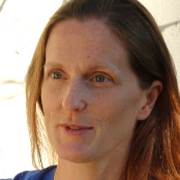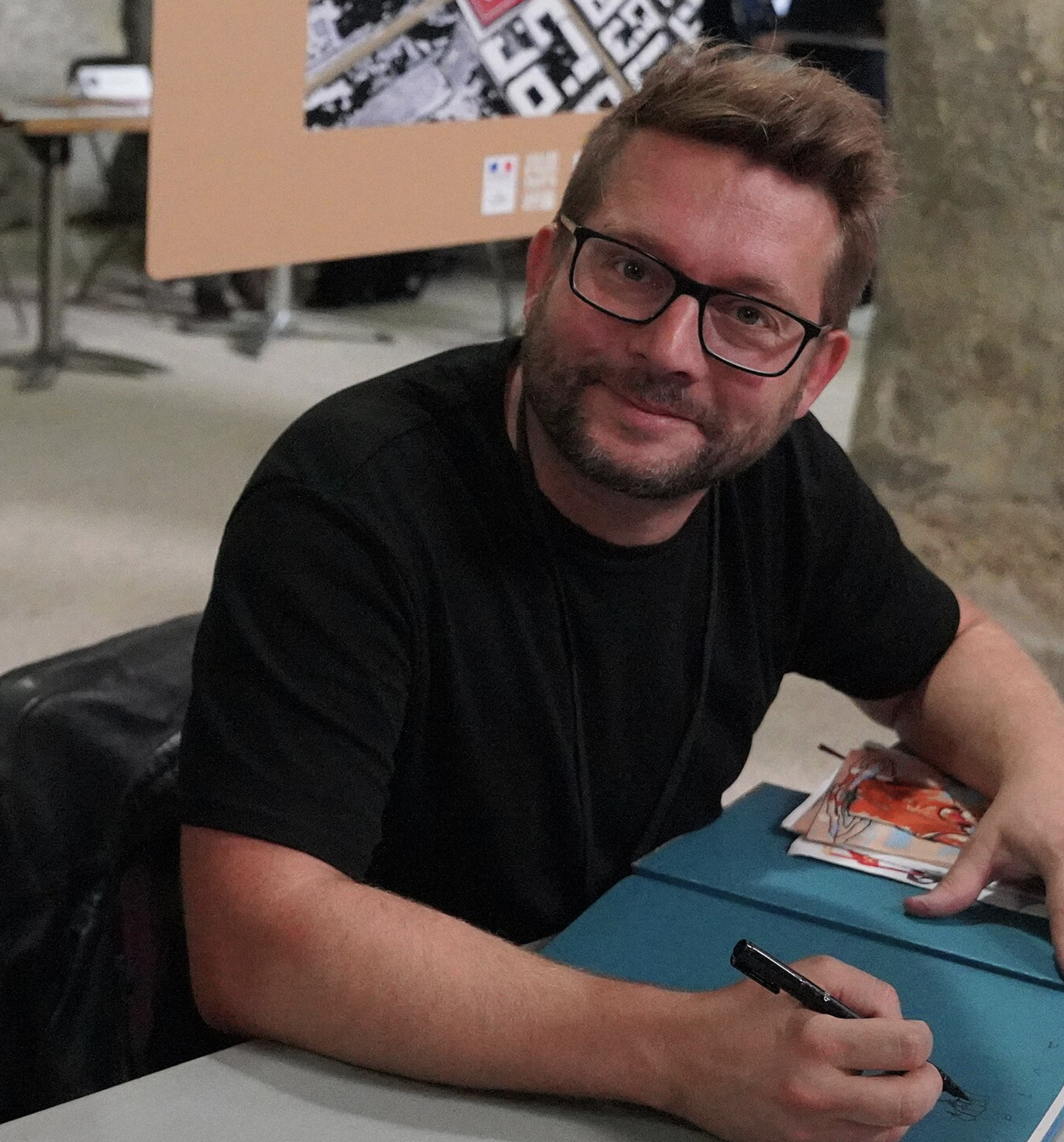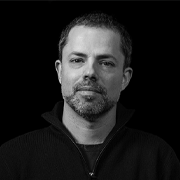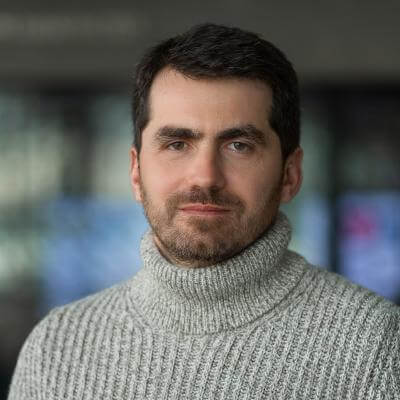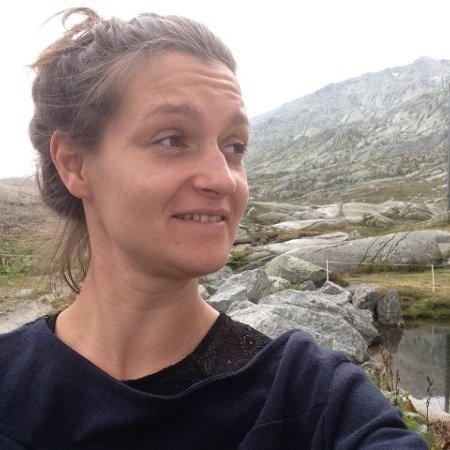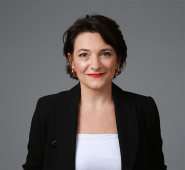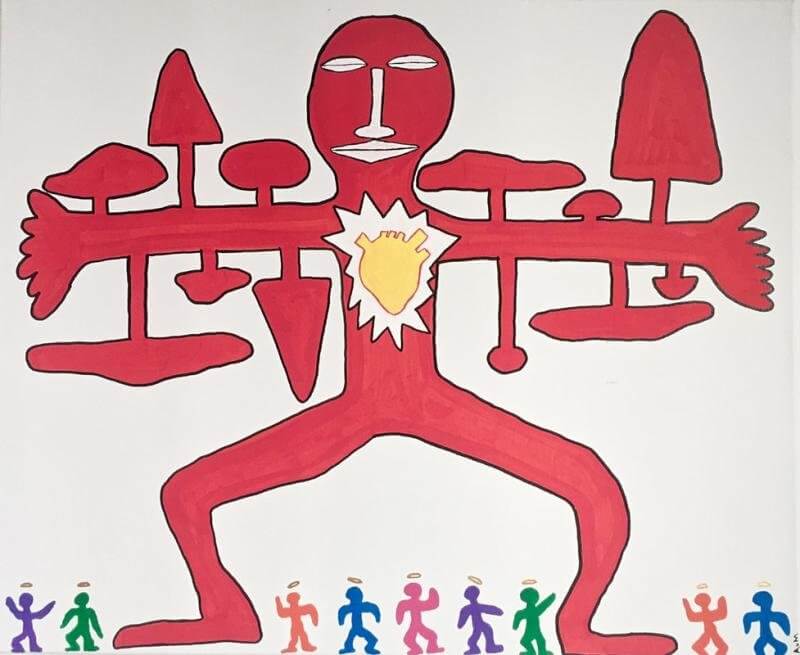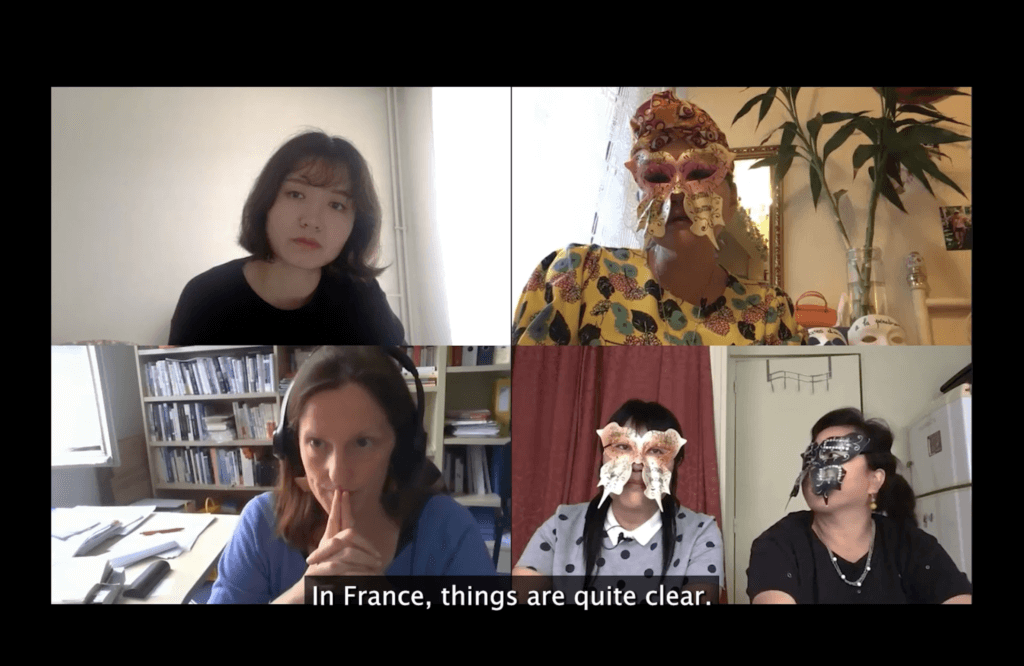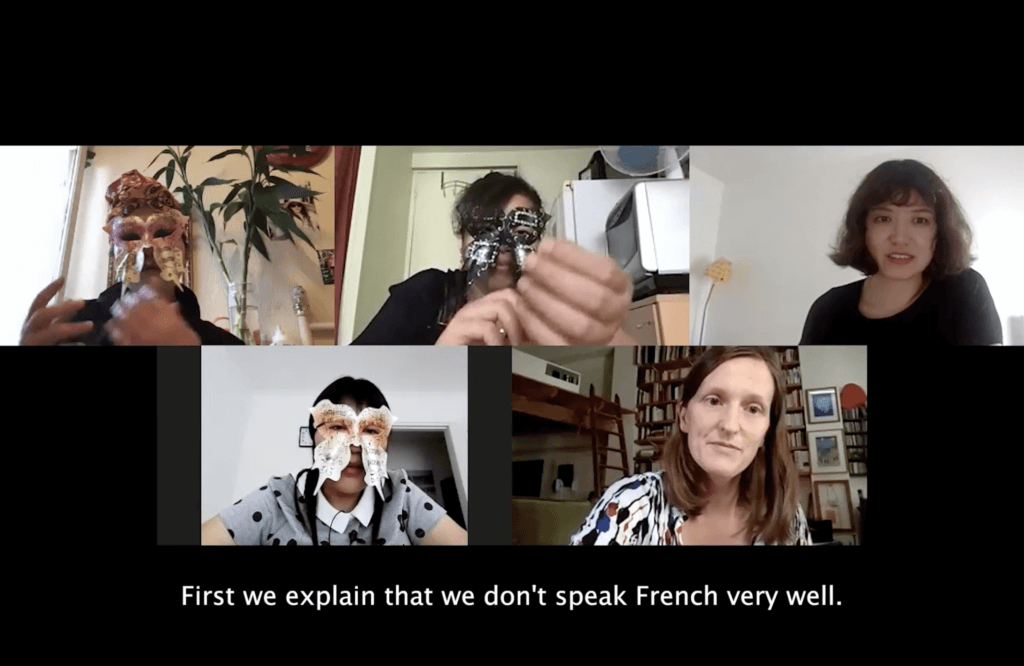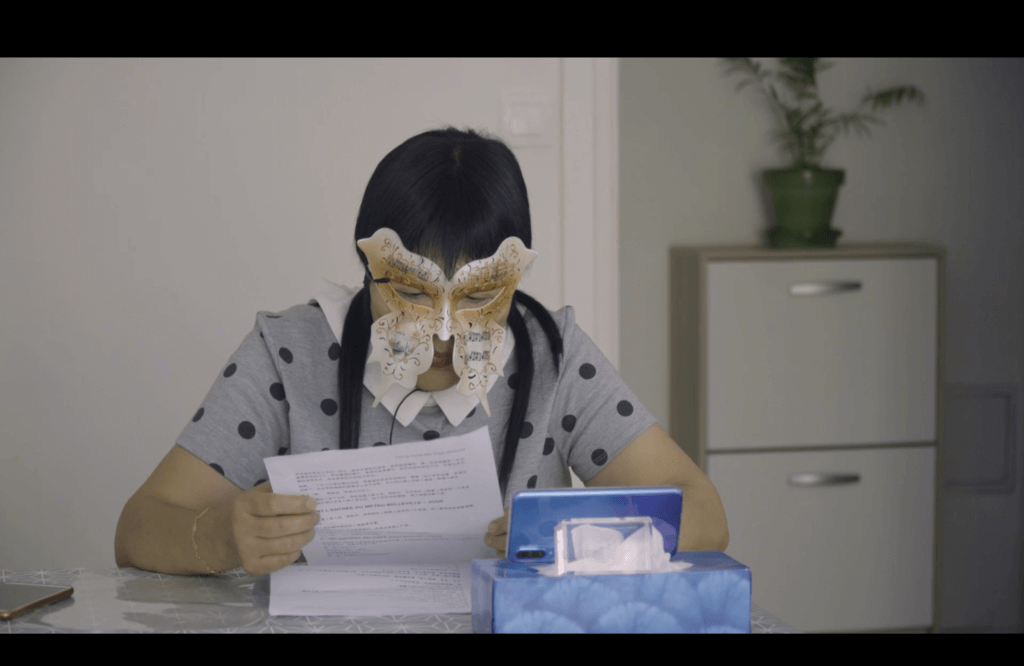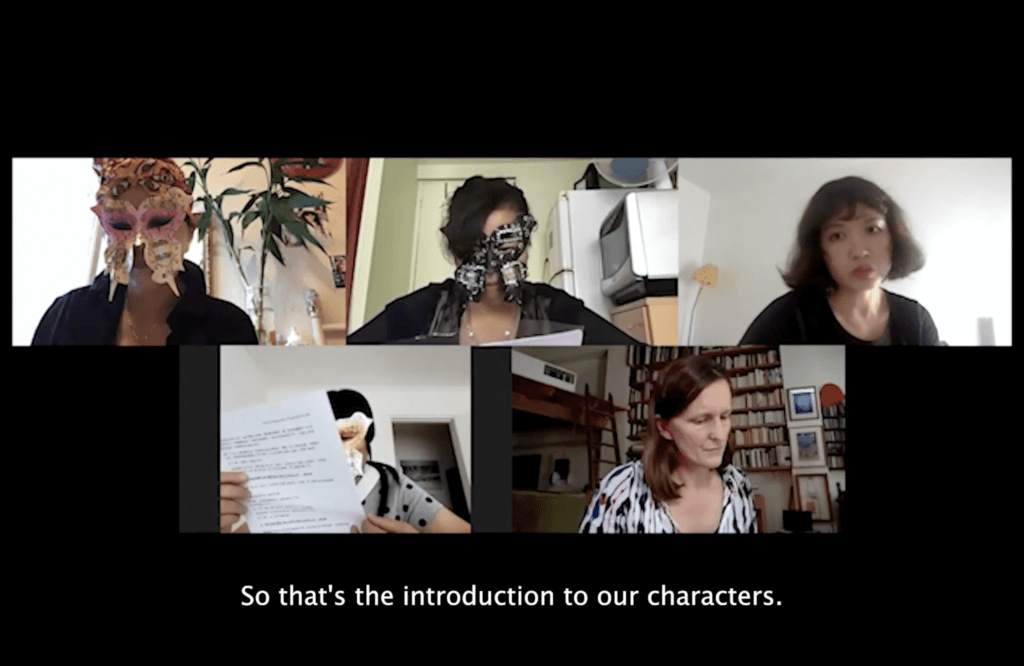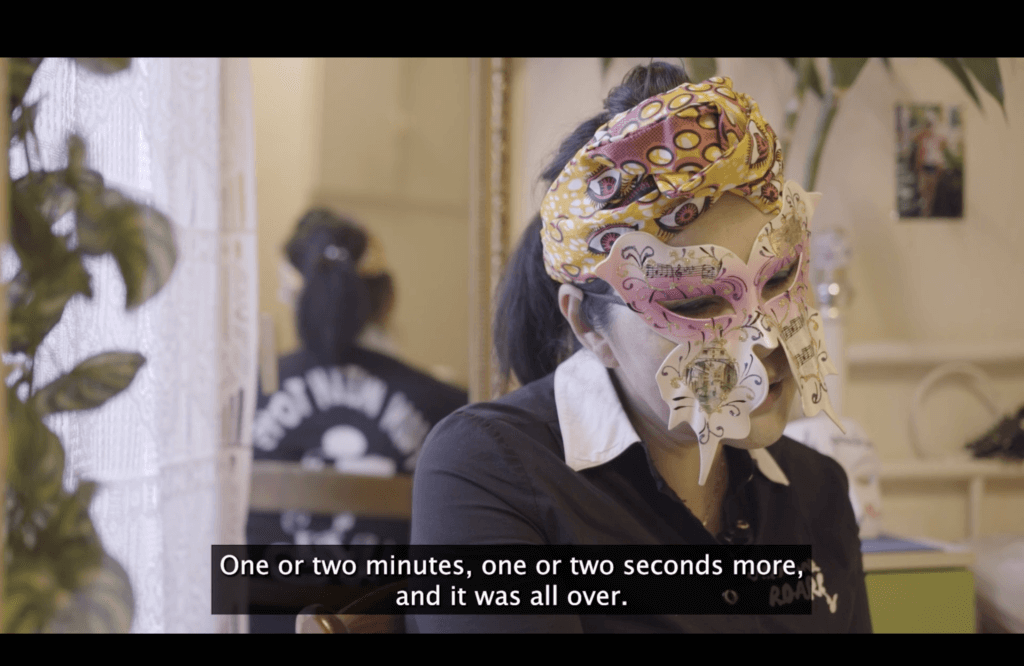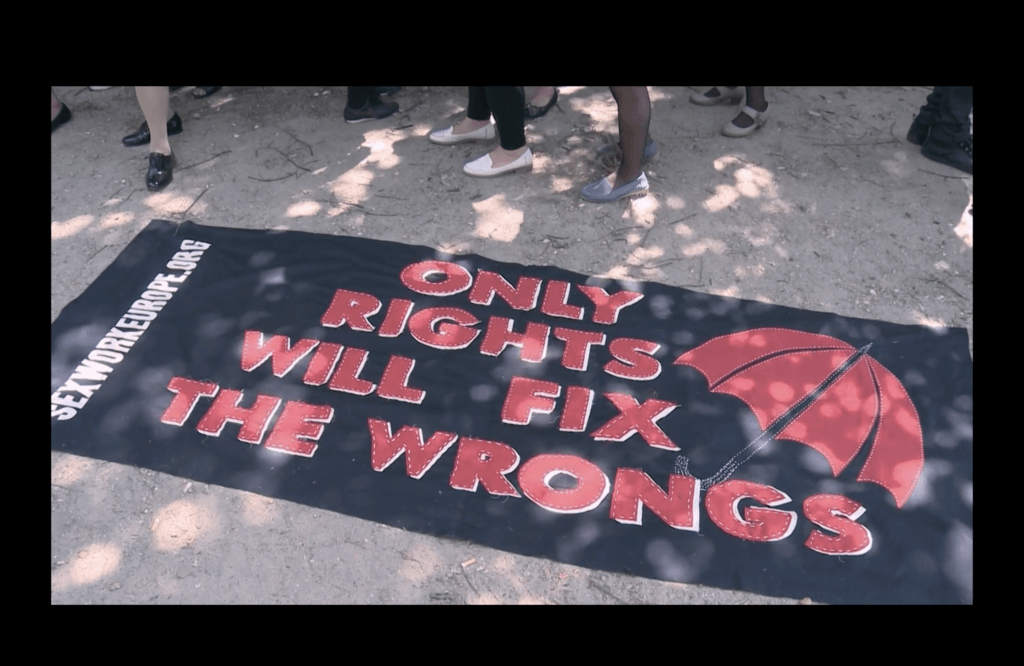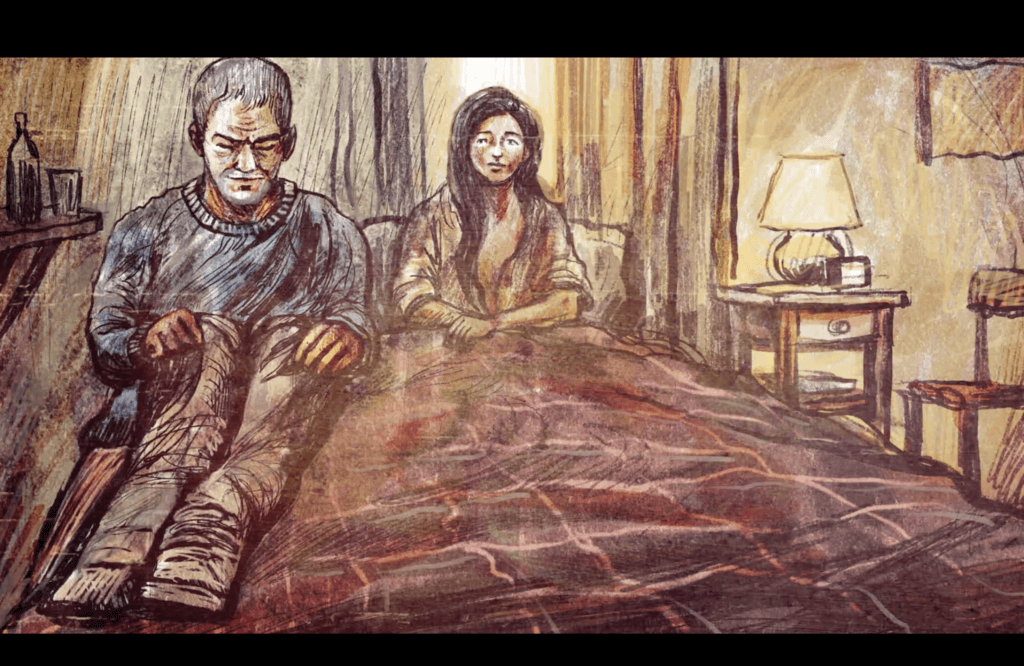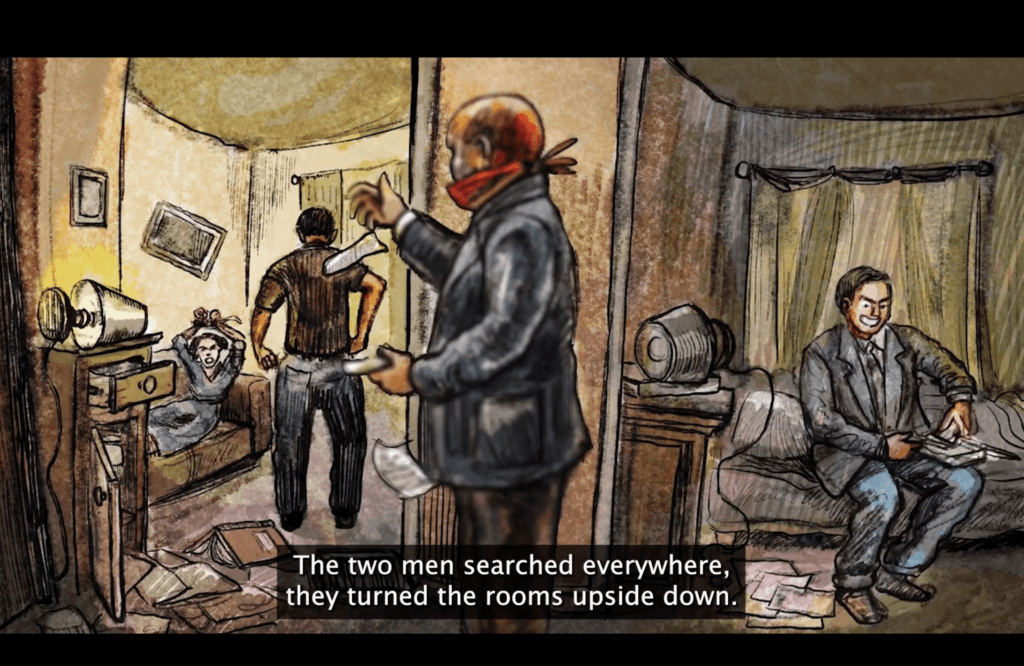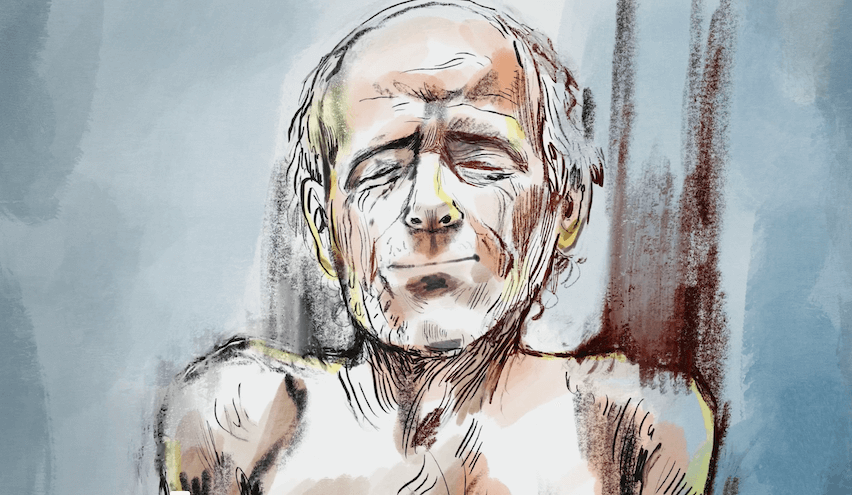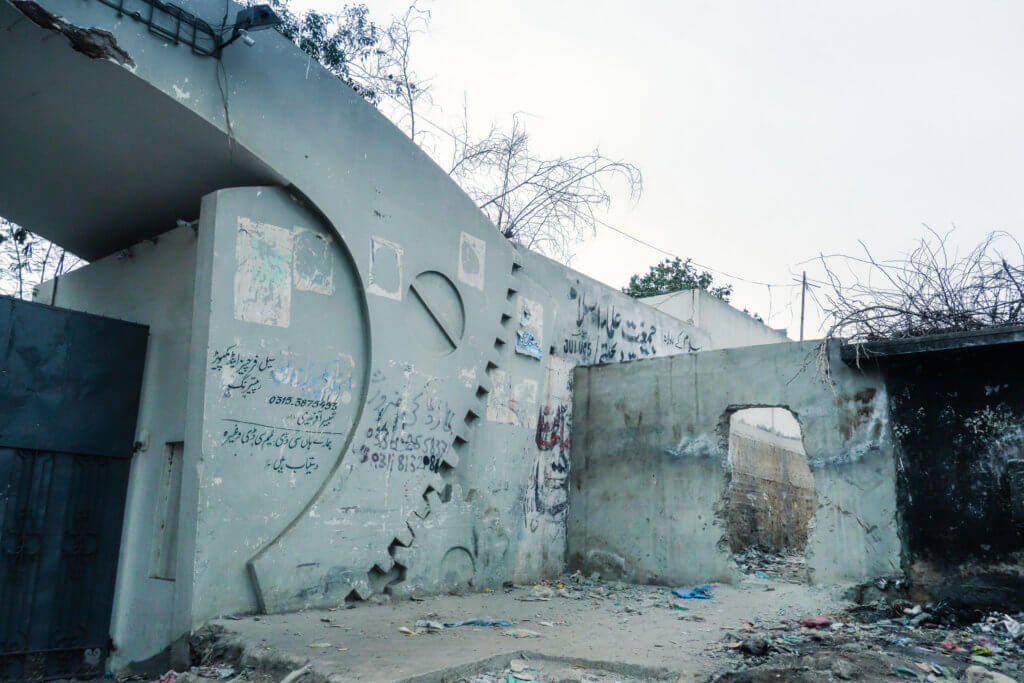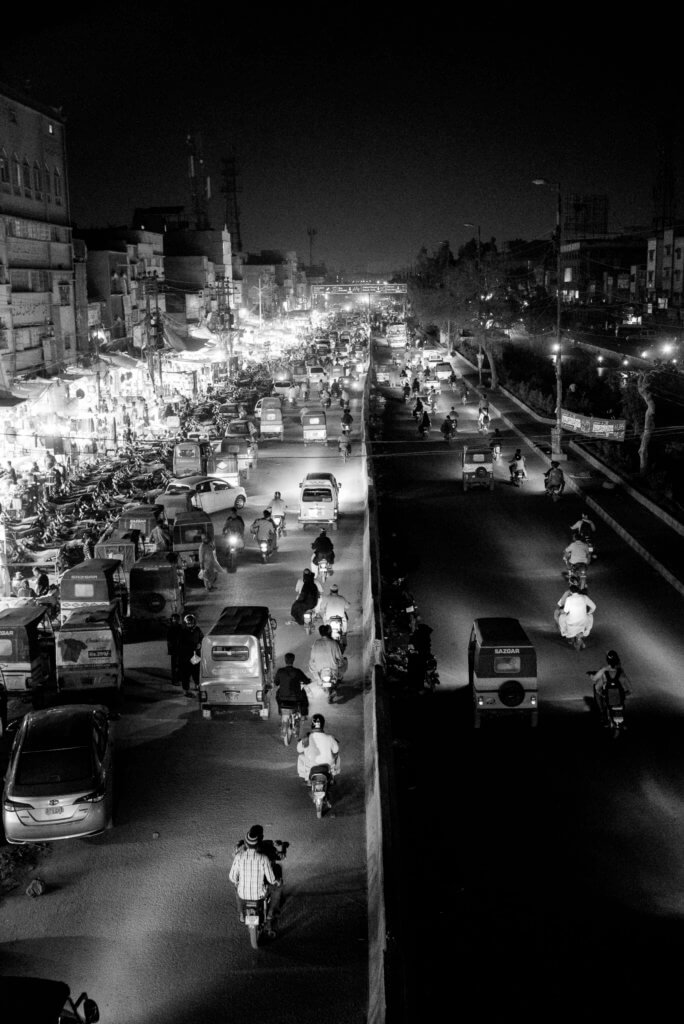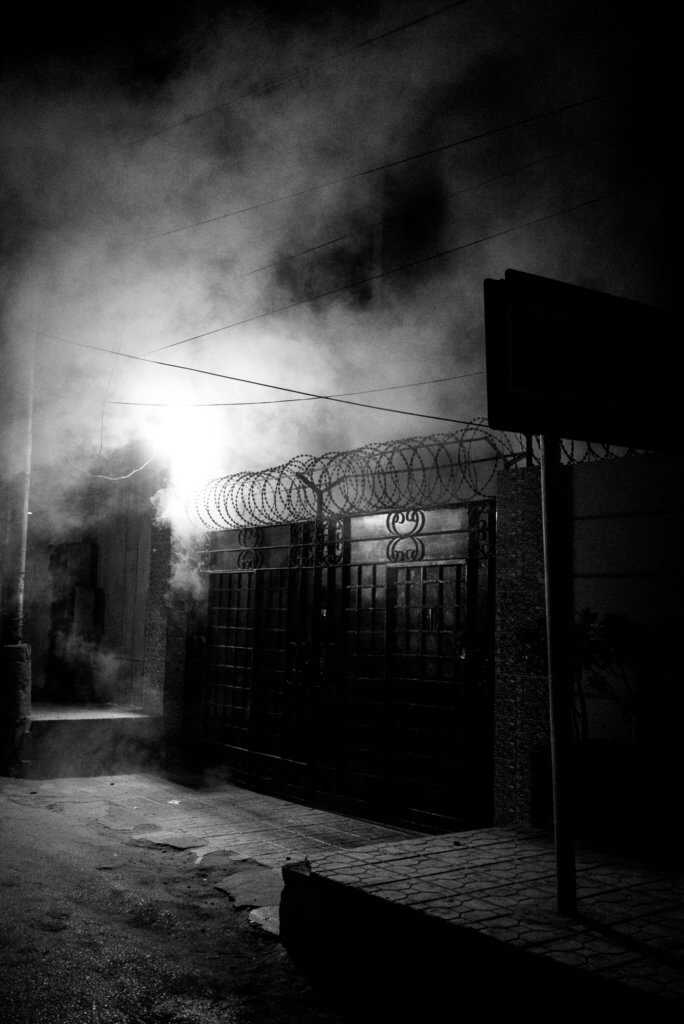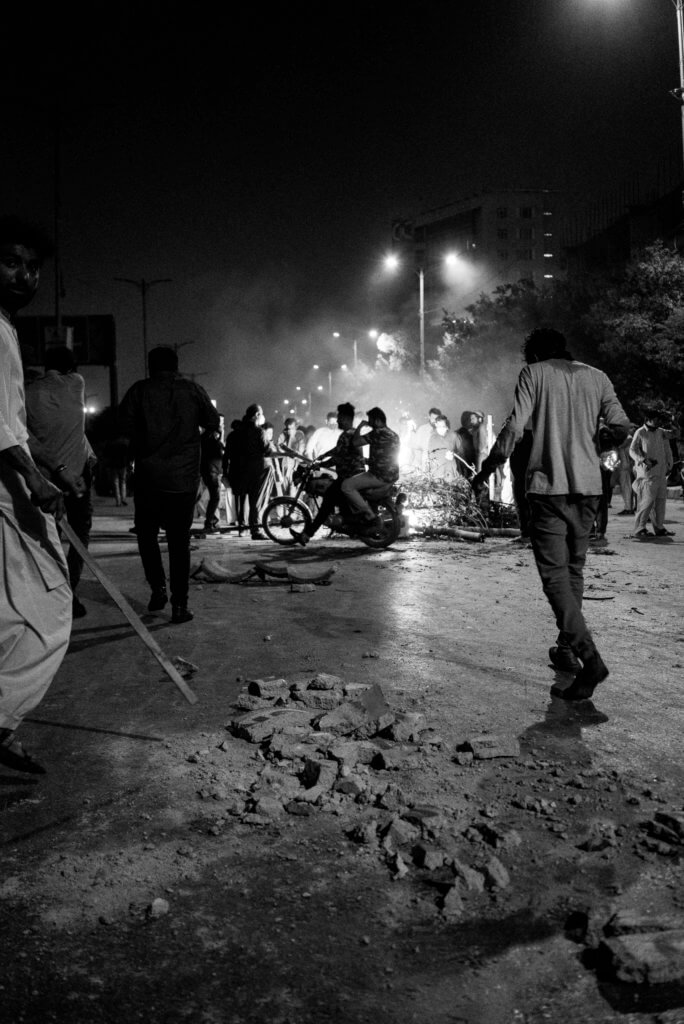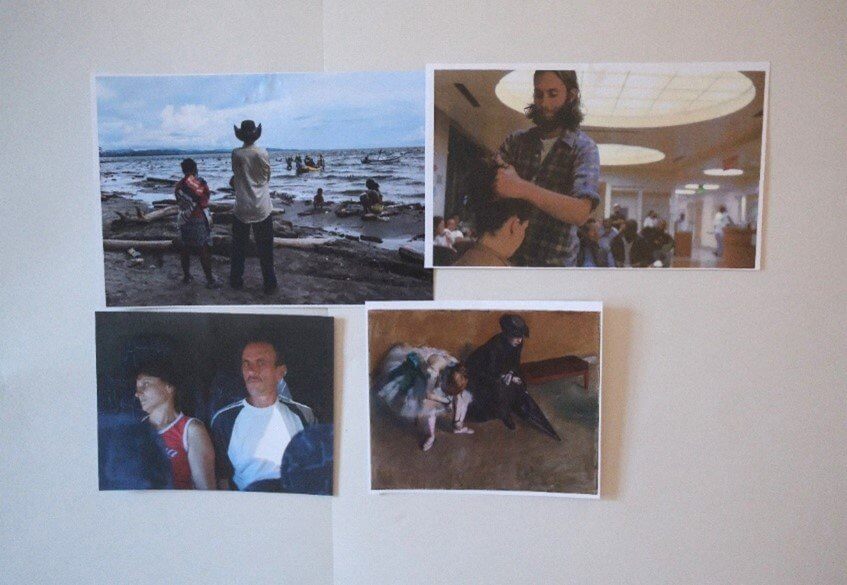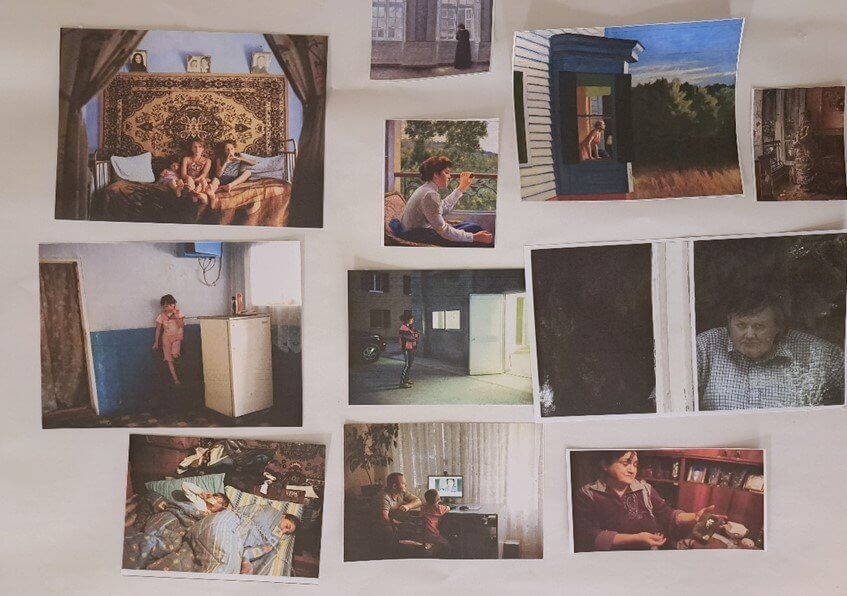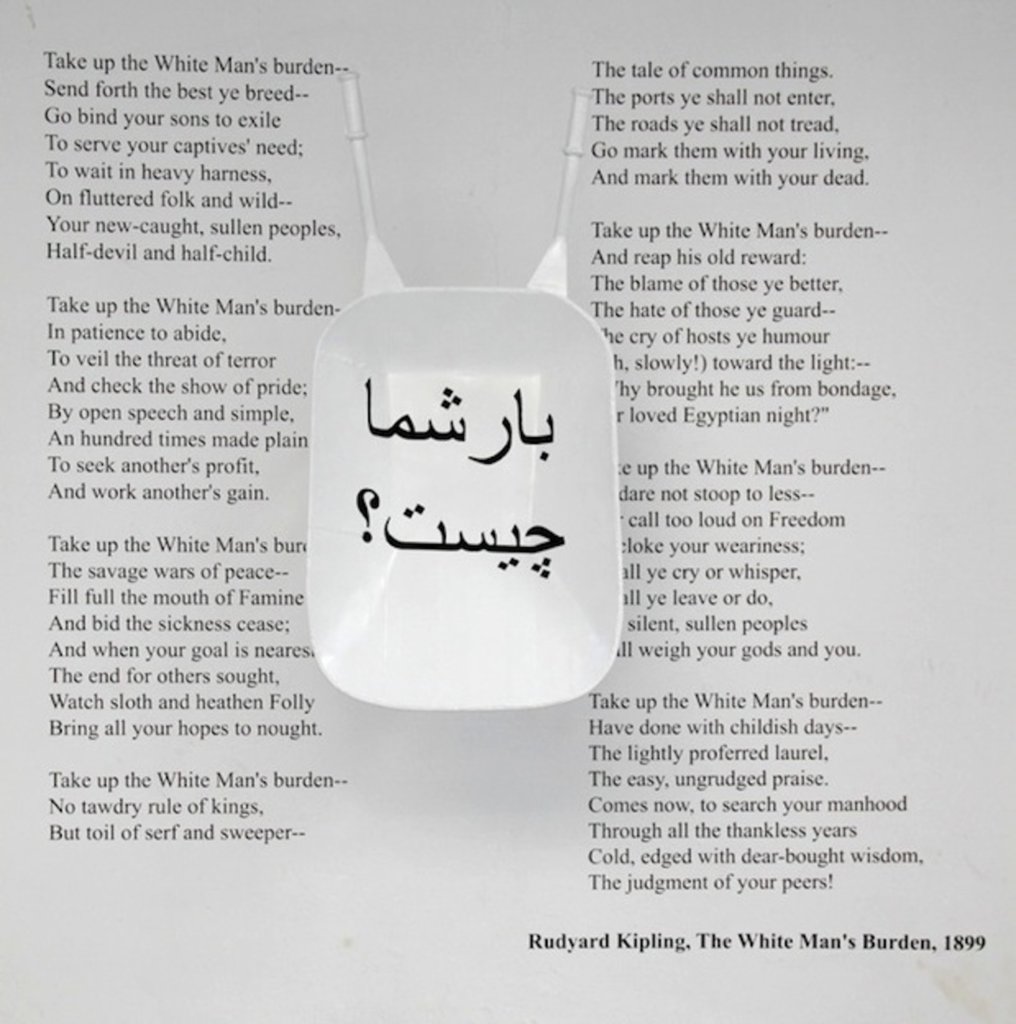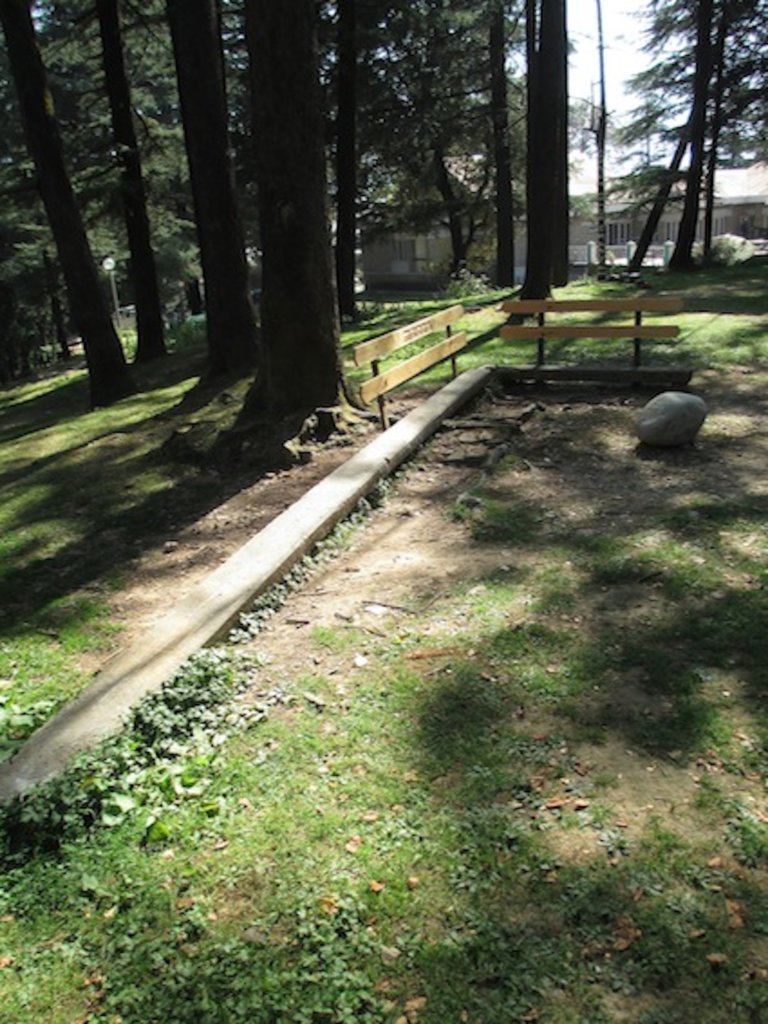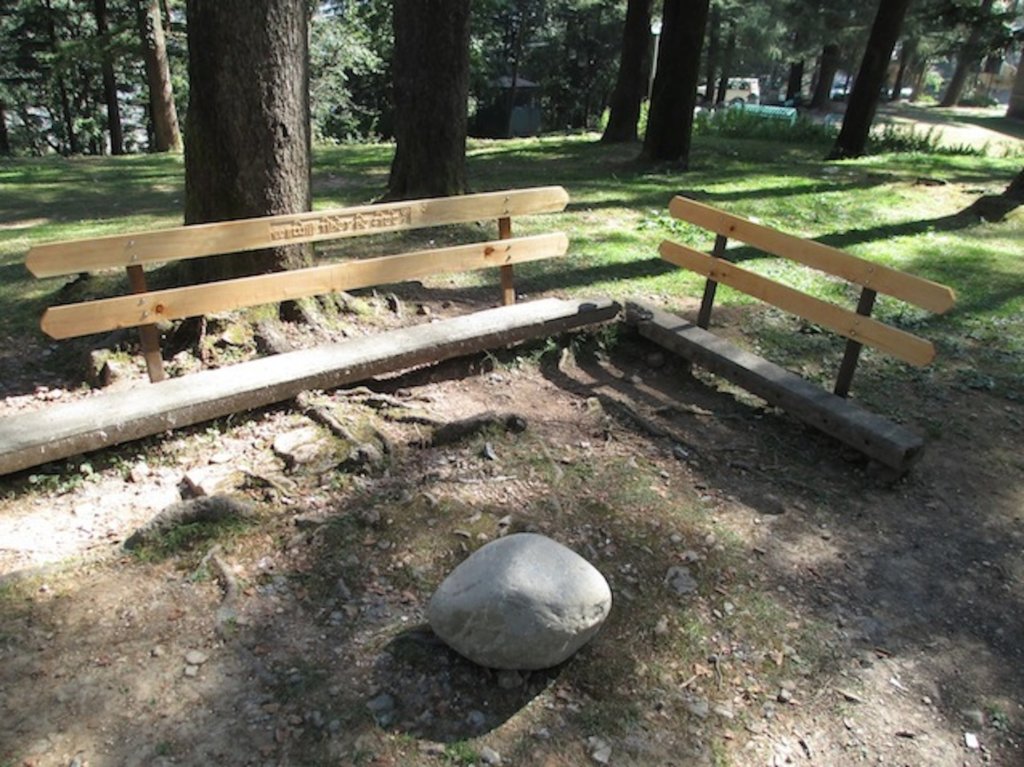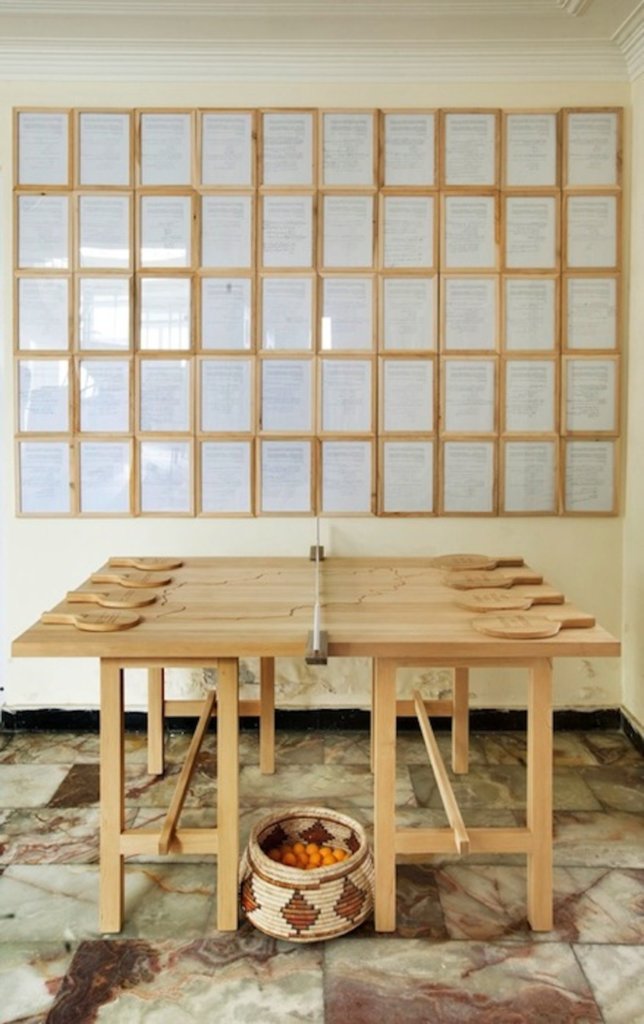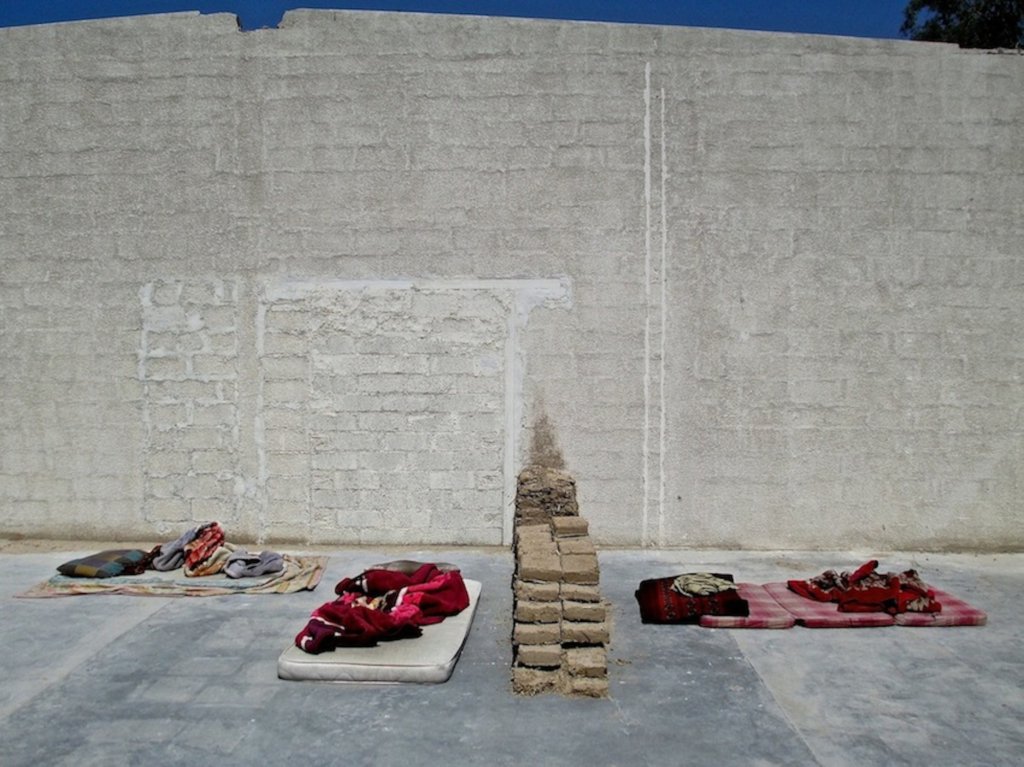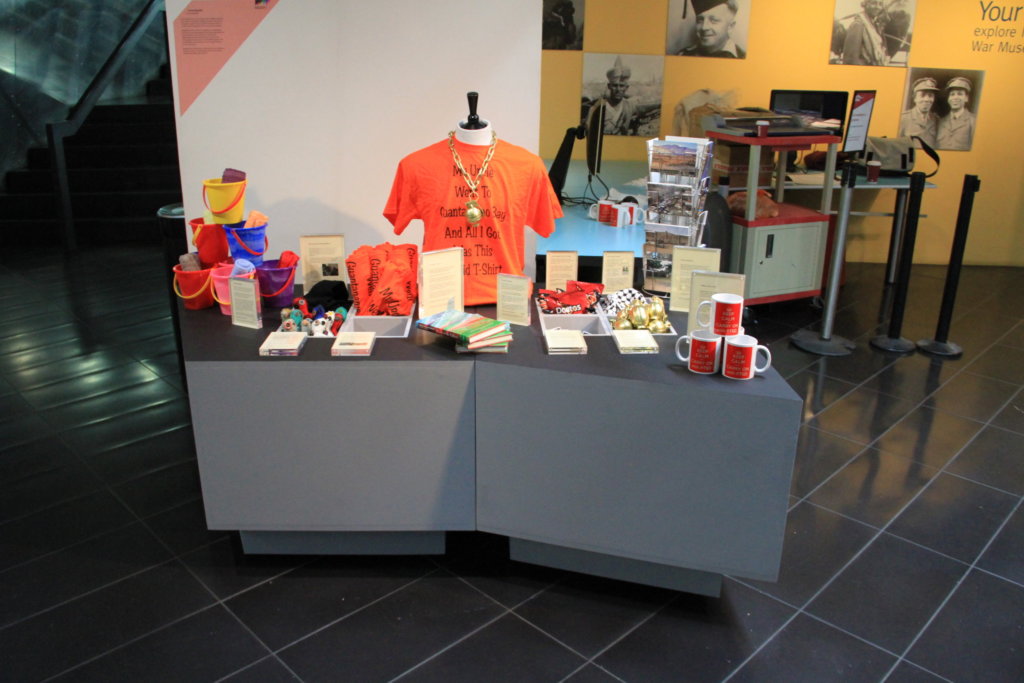Art, Anthropology, and All That Lives Between
https://doi.org/10.71609/iheid-zd7w-jk24For several decades now, art has borrowed research theories and methods from the social sciences, particularly from anthropology after its turn to cultural critique in the 1980s (Fischer and Marcus 1999). All the while, the social sciences have likewise shown an increased interest in using art as an integral part of the research process (Rikou and Yalouri 2018). As such, knowledge production is something that belongs neither here nor there, but rather within the cross-overness and in-betweenness of collaborative, interdisciplinary (and inter-relational) research approaches As such, knowledge production is something that belongs neither here nor there, but rather within the “cross-overness” and “in-betweenness” of collaborative, interdisciplinary (and inter-relational) research approaches, where the traditional binary relationship between researcher and researched dissolves into one of epistemic partners.
For this article, I investigate how the affective and the rational come together in our attempts to understand the international relationships (in other words, the humans) that drive international relations. I explore the relationship between art and research, but in a more experimentally ethnographic way, using art and creative practice as a medium through which to challenge the hierarchies of knowledge production. In this context, I recently completed an artistic research project on contemporary art in Afghanistan, as it developed under 20 years of foreign occupation and now continues to be cultivated by Afghan emigrant artists as part of their “diasporic condition” in hostland environments (Hage 2021). I recorded semi-guided, open-ended conversations with several artists now living in France (Marseille and Nice) and Germany (Berlin and Hamburg) about their thoughts and experiences while working as artists in Afghanistan during the twenty years of foreign occupation. I also asked them about their emigration/evacuation experiences, their thoughts on “Afghan culture” as a fixed or “fluid” concept and their ongoing creative practices.
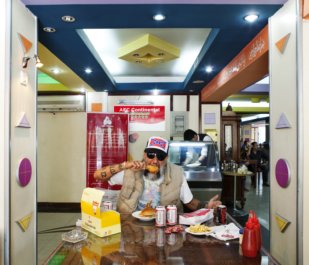 “Afghan Fried Chicken” from Afghan by Blood, Redneck by the Grace of God (2011)
“Afghan Fried Chicken” from Afghan by Blood, Redneck by the Grace of God (2011)
Below is a brief conversation with my Afghan artist interlocutors, bringing together recorded audio from multiple individual encounters into one conceptual, almost dystopic, exchange. As such, this ethnographic experiment is an exercise in making space for new, co-produced lines of inquiry within my research, serving as what Vincent Debaene calls a “site for experiences made with writing and through writing… as a true continuation of fieldwork”, in this case on the complex affective realities of these artists’ lives and practices (Debaene 2014).
NT – In Kabul, I remember a lot of artists telling me they were making the art they made because that’s what the foreigners wanted. They didn’t care if it was any good or not.
NH – When I was in Afghanistan, I was stuck in only making work about Afghanistan.
AM – Is there really a difference between what foreigners want to see and what Afghan artists want to create?
JG – If I’m asked: “what is the Afghan in me or in my work?”, it’s really difficult to say. I can’t answer this question because there really is no answer.
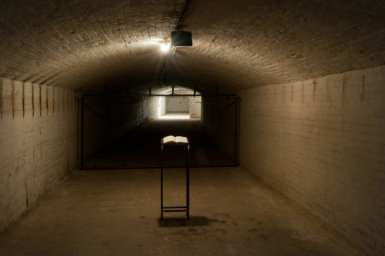 Resolution (2012). Site-specific installation for dOCUMENTA(13) in a former WWII bunker that explored the historical and contemporary relationship between Germany and Afghanistan through an original fairy-tale.
Resolution (2012). Site-specific installation for dOCUMENTA(13) in a former WWII bunker that explored the historical and contemporary relationship between Germany and Afghanistan through an original fairy-tale.AH – All the platforms are in white hands. So even if I wanted to have an exhibition of your work, for example, from the 2000s, they would all say “Oh, his work is too critical, too anti-imperialist, so we’re not interested in showing it”. Yeah, too critical of them!
AH – They’ve completely devalued our artistic interventions.
AM – As contemporary artists, maybe we need to first know where we come from in order to know where we’re going.
NH – There wasn’t a watani [indigenous] contemporary art movement before NGOs brought in their art projects.
AH – For a lot of us, there’s not really a difference if we had become an artist or something else, like a carpenter or a butcher. Our work happens to be making art, but the way we approach it could have been the same with anything.
AM – NGOs implementing contemporary art projects in Afghanistan had an agenda.
MW – It was almost impossible to avoid.
AM – Interest in contemporary art from Afghan artists seems to follow the same hot headlines rhythm of media interest in Afghanistan.
NH – The media distorted things a lot because they would always try to find the geopolitical message in the artwork or exhibition, even if there wasn’t necessarily one.
AH – That’s the orientalist view that they have, like we can’t talk about anything else.
WM – The lack of security played a significant role in Afghanistan not being able to develop a local style of contemporary art. And so, with the foreigners came a certain degree of security in the cities. But also their ideas, not ours, about what contemporary art is.
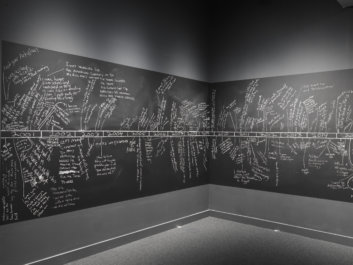 Remembering a Future 2018
Remembering a Future 2018NT – Contemporary art in Afghanistan started in the 2000s with foreign projects. So whatever those projects showed us, that’s what we learned.
MW – Over twenty years, everything was projaey [project-based]. In fact, after 9-11, the politics of Afghanistan was itself a project, and so within that larger project you could find a lot of smaller ones. To the point that the people themselves became a project.
MW – Personally, whatever workshop or project gave the best food, that’s the one I’d go to.
ZK – I feel like all those projects during twenty years weren’t really helping Afghanistan at a foundational level.
NH – There were people there specifically to help us with the evacuation.
NT – There were a lot of people on the bus going to the airport, and at least 100 artists.
NH – Most everyone I knew well and who was in touch with me got out, but a lot of students at the Faculty of Fine Arts didn’t.
WM – In the end, neither art nor education is important for Afghans who have experienced so much intergenerational trauma. The most important thing they need is rest from the fighting.
AH – I often think about what’s remained and what’s disappeared.
NT – What is the sabk [style] of art that I do? Imperialism.
 Conflict Chic: Soldier (2011). Mixed-media artwork highlighting the way contemporary artistic practices from Afghan artists became what the artist termed “conflict chic” and served to perpetuate the orientalist racialisation of Afghan artists
Conflict Chic: Soldier (2011). Mixed-media artwork highlighting the way contemporary artistic practices from Afghan artists became what the artist termed “conflict chic” and served to perpetuate the orientalist racialisation of Afghan artistsWithin anthropology, experiments in ethnographic writing – such as this one – and broader para-ethnographic approaches to the co-production of knowledge have been made possible due to a certain degree of auto-reflexivity among anthropologists and their attempts to reconsider the field’s traditionally colonialist gaze. Alternative considerations result in new ways in which the discipline sees, theorises, writes, represents and understands the people and cultures it studies. These developments have brought anthropology closer to contemporary art, which can no longer simply be considered an object of study for anthropologists. Rather, contemporary art increasingly becomes an interlocutor and collaborator, suggesting new ways and means of doing and/or approaching anthropological research.
There is not enough space here to allow for a comprehensive look into the relationship between research-based art and anthropology, including the obstacles to that relationship that can still be found in both disciplines, such as the “fundamental differences concerning approaches to cognition and ethics” (Schneider and Wright 2010:5). What is clear is that the incorporation of artistic expression into the scientific realm of knowledge production, particularly the art of subaltern artists – such as those from Afghanistan – helps to disrupt traditional, Euro-American centre-periphery engagements with art and science. This disruption pushes the critique of an Orientalist gaze rooted in the racialisation of the subaltern beyond academic anthropological writing. In doing so, it opens a space for reflection where artistic and scientific disciplines can contribute to each other in new ways.
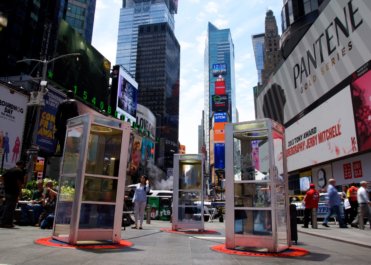 Once Upon a Place (2017). Site-specific installation highlighting the immigrant foundations of NYC through the audio collection of oral histories from the city’s five boroughs. The phone boxes were converted to audio players so visitors could step inside, pick up the receiver, and listen.
Once Upon a Place (2017). Site-specific installation highlighting the immigrant foundations of NYC through the audio collection of oral histories from the city’s five boroughs. The phone boxes were converted to audio players so visitors could step inside, pick up the receiver, and listen.
Indeed, as the disciplines continue to learn from and teach each other, the binary, professional distinction between the two will perhaps eventually dissipate, leaving us with no other choice but to acknowledge that the two fields are, in more ways than we may have imagined, one and the same.
Electronic reference
Mojadidi, Amanullah. “Art, Anthropology, and All That Lives Between.” Global Challenges, Special Issue no. 3, October 2025. URL: https://globalchallenges.ch/issue/special_3/art-anthropology-and-all-that-lives-between. DOI: https://doi.org/10.71609/iheid-zd7w-jk24.This bilingual special issue of Global Challenges has been jointly produced by the Geneva Graduate Institute’s Research Office and the Centre for International Studies (CERI – Sciences Po – CNRS). Coordination was provided by Miriam Périer for CERI and Marc Galvin for the Geneva Graduate Institute.
VIDEO: Alexandra Grimal (2020)
Domaine de Chambord
An inauspicious day from the get-go
My poetry has always been influenced by other artistic media, including contemporary dance, music, and audiovisuals. ‘An inauspicious day from the get-go’ is a poem with direct roots in cinema. It is affected by the simple, striking, abrupt, and contradictory visual elements in the films of two avant-garde Palestinian directors: Hany Abu-Assad’s Rana’s Wedding and Elia Suleiman’s Divine Intervention and The Time that Remains. Similar to these films, the poem explores the indifferent, banal, and haphazard genocidal violence inflicted by, and inherent in, settler colonialism; so that regular, daily acts of the colonized, like talking on a phone, or looking out a window, become extremely dangerous actions.
Through the ‘colonial encounter,’ such simple acts transform into areas within which the colonized struggle to maintain their continuity, existence, and life, as contrasted with the colonizer’s core endeavor[s] of disruption, annihilation, death. This poem touches on these contrasts of ordinary, day-to-day living, examining how colonialism obliterates them to a point of no return.
An inauspicious day from the get-go
Some damn thing made her mom start talking to her about her fiancé yet again. “He’s just not cast from the same clay we are,” she said, “and I don’t think he’s really got it in him to make it a home.”
And as always happens at such times, the young woman shouted and swore, then she hurtled—like a metal water tank hoisted half-way up towards the roof slipping its trusses to crash back down—out of the house.
In the moment between her opening the front door and slamming it behind her, a tank passed; the sound of its tracks the crushing of little children’s bones, the smell of its exhaust charred corpses.
As she crossed over to the opposite sidewalk a sniper behind her shot a young man at the end of the street, of whom nothing had appeared in the machine gun’s sights except the hair on the back of his head.
Before she raised her hand to her friend’s doorbell a bulldozer had extended its metal claw towards the walls of the next-door building, so that it crumbled into pieces on the ground.
Under the rubble a doll with disheveled hair and dusty clothes was playing some music out of her belly, next to her a notebook in which the boy had drawn what he imagined of a bulldozer destroying a house that he imagined as his own.
The boy sits silent while the woman at his side (his mother) hits herself on the head, his father having preceded him to prison. The boy will grow up one day and will love a girl who has grown up also, and then he will be betrothed to her.
The boy who got engaged to the girl—after they grew up, and he got out of prison—had been saying goodbye to her at the end of the street, and stayed there watching her walk away until she entered her house. Then he slowly walked along the street from one end to the other, passing in front of the sniper, who eventually took the decision to put a bullet in the back of the boy’s head, after the tank had gone down the street, and he’d heard the sound of a door slamming and a girl had dashed by from one sidewalk to the other, all of which he took to be evil omens, and were.
Copyright © 2025 by Hisham Bustani. Originally published in A Poem-a-Day on January 27, 2025, by the Academy of American Poets.
Translated from the Arabic by Alice Guthrie.
VIDEO: Medical placement in the Solomon Islands
Bond University
Presentation of Destiny/Destination and reading of selected poems by Darius Kethari
Geneva Graduate Institute
VIDEO The Monkey in the abstract garden, Alexandra Grimal
Montage 1: Waiting with, differentiated temporalities in shared waiting

It is unsurprising that waiting has a collective aspect, fostering interaction and potential solidarity. Yet, juxtaposing images like this film still from Peter Nicks’ The Waiting Room (a woman awaiting a consultation alongside her partner) and Edgar Degas’ painting L’Attente (a young dancer accompanied by a possible chaperone) raises questions about differentiated temporalities in shared waiting. How does the presence of accompanying individuals who share the waiting experience, even though they are not directly waiting for anything, alter the dynamic of waiting?
Nora Doukkali Elamajidi
Artistic collaborations with Carlo Vidoni (Destiny/Destination) and Loris Agosto (Homo Itinerans)
It was almost by chance that I began collaborating with two artists I knew from before. I first worked with Carlo Vidoni to design an exhibition entitled Destiny/Destination, which resulted in a polyphonic book bringing together interviews with migrants and poetic evocations, drawings and photographs (Monsutti & Vidoni 2023). The words we collected uncovered the vacuity of certain predefined categories: for example, the labels “economic migrants,” “asylum seekers” and “refugees” flatten a much more complex and diverse landscape. Our interlocutors spoke of their migration trajectory in terms of a tension between attachment to the places where they grew up and curiosity about the world that exists beyond the walls of their homes. These polymorphous conversations were translated into an open language that crossed the boundaries between social anthropology and visual art, between creators and the public, to reach people who could relate to the migration narratives and enrich them with their own experience. The lines on the palm of the hand were our visual and discursive starting point. They tell stories, they convey a message of singularity and, at the same time, of shared humanity, of idiosyncrasy and universality.
 I Am From Where I Am Going, Geneva, March 2024 (A. Monsutti).
I Am From Where I Am Going, Geneva, March 2024 (A. Monsutti).Another artist, Loris Agosto, was struck by a sentence that an old man told me during my fieldwork in the mountains of central Afghanistan. I used this sentence to open the book Homo Itinerans (Monsutti 2020): “I come from where I am going!” An apparently paradoxical sentence, it is more than just a formula, it is an invitation to change our perspective and take a fresh look at human mobility. Here, social sciences inspired art through the production of sculptures in which human faces can be distinguished, without it being clear whether they are being born or being swallowed up by mud. The work was complemented by figurative texts I wrote to evoke migrants’ conditions of living and itinerancy as a way of being in the world (see more).
Alessandro Monsutti
The Garden of the (In)visible
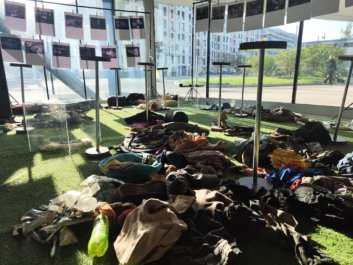 The Garden of the (In)visible, Geneva, November 2024. © Alessandro Monsutti
The Garden of the (In)visible, Geneva, November 2024. © Alessandro MonsuttiIn line with Danto’s and Latour’s invitation to see art as a way of being and acting in the world, the installation The Garden of the (In)visible, co-created with my colleagues Roberta Altin, Giuseppe Grimaldi and Katja Hrobat Virloget, staged artefacts collected along the so-called Balkan Route, at the borders between Croatia, Slovenia and Italy. Here, objects are clearly social agents: they render visible people who were largely invisibilised. The installation was presented in public spaces and even on the streets, drawing attention to a socially sensitive situation, intentionally inviting polemic among people who might disagree in a way that participants in an academic conference would not. The process was participatory at each of its various stages: First, collecting the artefacts involved local authorities and activists, students and professors from the various universities of the region. Then, the installation was accompanied by events that brought together migrants who had taken the Balkan Route, people living near the various borders, and all those who joined the collect.
In this project, the differences between social sciences and art, but also between investigator and investigated, between curator and visitor, fade. It was not about communicating the work of social scientists to a broader audience but rather creating – beyond the narrow circle of university professors and students – a new epistemic and political community. We were modestly following Latour’s footsteps, making public debate more accessible and challenging taken-for-granted assumptions, but, more importantly, we hoped above all to open up new possibilities for action and coexistence.
Alessandro Monsutti
Hannah Entwisle Chapuisat’s current research explores how art…
My current research explores how art’s critical capacity to engage affect, the senses, and the imaginary might influence international norm evolution in intergovernmental venues, drawing on constructivist scholars Martha Finnemore and Kathryn Sikkink’s 1998 norm “life cycle” model that recognizes the role of “[a]ffect, empathy, and principled or moral beliefs” in international norm dynamics. I have found that when art is integrated within collective efforts to develop norms, it can increase global policymakers’ awareness and understanding, inspire ideational commitment, and generate creative thinking, which can all influence norm evolution processes. For example, in the context of a programme such as the UN80 Initiative – an initiative launched in March 2025 to make the United Nations more effective – art-based projects may stimulate more expansive and innovative reflection about the future of multilateralism. Rather than restricting the debate to what is financially and politically viable, art has the capacity to propose or test radical solutions that may embolden global policymakers to think bigger and perhaps arrive at more innovative visions.
Screening of Mati Diop’s 2024 film Dahomey at the CDHM (February 2025)
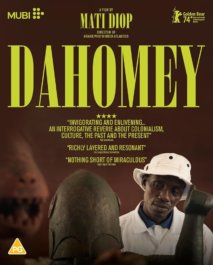
In February 2025, the CDHM hosted a screening of Mati Diop’s 2024 film Dahomey, a documentary following 26 objects from the former Kingdom of Dahomey as they leave Paris and are returned to present-day Benin. The screening was followed by a panel discussion on the “Diplomacy of Restitution: Issues of Knowledge and Powers”. Participants included leading academics, diplomats, curators and writers active in both Benin and Europe. Co-chaired by Doreen Mende, Director of Research of the State Art Collections in Dresden and Prof. Mallard, the discussion explored issues around how stolen art treasures can be received in a country which has reinvented itself in their absence. The panel covered themes ranging from the making of the film and panellists’ personal experiences of restituting archives to methods of postcolonial digitisation and digital archiving. Leading up to the event was a seminar for students at HEAD – Genève on collaborative projects on provenance research between African and Western researchers. A special session, “Within me resonates infinity”, based on the film, was held at the Museum of Ethnography Geneva (MEG) for students of HEAD – Genève and IHEID. Through the organization such multi-facetted events with a diversity of actors from different backgrounds, the CDHM hopes to break disciplinary and institutional boundaries, placing the Institute at the forefront of pedagogy on multilateralism.
Grégoire Mallard
“Image wars”, a forthcoming project by Nataliya Tchermalykh
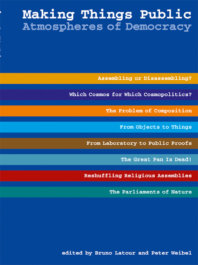
The first exhibition organized by Bruno Latour and Peter Weibel in 2002, Iconoclash, examined the: the various attempts to destroy, prohibit or indeed protect religious as well as scientific and artistic images of God, nature and man. This theme of image wars will be further developed by Nataliya Tchermalykh, a CDHM affiliate researcher in a forthcoming project. The second exhibition produced by Latour and Weibel, Making Things Public, addressed what the organisers called the “atmospheres of democracy”, pairing an impressive range of philosophers, historians and sociologists, from Europe and the United States, with visual artists. Their task: to explore the variety of media via which citizens in modern democracies voice their political claims.
Gregoire Mallard
PODCAST: Makenzy Orcel. Le sensible, la raison et la compréhension du monde
Research Office – Geneva Graduate Institute
VIDEO Member State, UN and public engagement with artwork during negotiations
Youtube / VonWong
More on my ethnography of the Tubas Cluster Plan, by Dorota Kozaczuk
My ethnographic study of the Tubas Cluster Plan dates back to 2016, when the Palestinian consultancy CEP (Center for Engineering and Planning) began developing a regional master plan for the Tubas Governorate in the northern Jordan Valley. The project covered 118,297 square kilometres, including lands within the 1940 village boundaries of Tayasir and Bardala, as well as northern sections of Area C within Tubas city limits. Nine Palestinian communities were included in the planning framework: Al Malih, Ein al Hilwa, ‘Aqqaba, Tayasir, Khirbet Tell el Himma, Ibziq, Kardala, ‘Ein el Beida, and Bardala.
At the outset, the CEP team compiled available GIS maps, updated aerial photographs, and gathered archival data from Palestinian ministries and municipal authorities. They collaborated with a Belgian NGO and UN-Habitat as part of the project “Fostering Tenure Security and Resilience of Palestinian Communities through Spatial-Economic Planning Interventions in Area C (2017–2020).” Consultations were held with village mayors and governorate representatives, following participatory planning protocols developed by GIZ and the Palestinian Ministry of Local Government.
By 2019, during my participant observation in CEP’s Ramallah offices, four planning options had been prepared. I was shown the preferred version and invited to meetings where it was presented to stakeholders.
Aesthetic Vision and Political Friction
The Tubas Cluster Plan was visually compelling. On a printed A1 sheet, the region was divided into three zones: a deep green western section for agriculture, a faint brown central zone for mountainous terrain, and a dull green eastern area for pastoral land. Seven small zones, marked in vivid orange and bordered in blue, represented planned communities in the north, west, and east. CEP staff noted that the Israeli Civil Administration had approved plans for Tayasir, ‘Ein el Beida, and Bardala, while previously rejected plans for Al ‘Aqaba, Al Malih, Al Farisyia, and Karbala had been redesigned.
The plan proposed a road encircling the mountain range, connecting the seven communities, and included upgrades to existing roads in the west and south. Notably, it omitted Israeli settlements, the separation wall, and the military designation of much of the area. In this orthographic vision, the region functioned holistically for Palestinian life, with orchards and livestock populating the mountains and tourist routes inviting exploration. The Tubas Cluster Plan was both a misrecognition of occupation and an assertion of Palestinian reality—true to its survey methods, logically deterministic, and far from naïve.
Between Aspiration and Constraint
Shortly after my study, CEP submitted a report with four proposals to UN-Habitat, the Ministry of Local Government, and the Tubas Regional Committee. I attended the unveiling at the Palestinian Ministry of the Wall and Settlements. The meeting aimed to align institutional goals, but quickly revealed tensions. Ministers and engineers spoke of life near the Occupation Wall and recounted stories of displacement. One minister criticized the plan as disconnected from lived realities and questioned its aesthetics. A planner, however, defended the right to imagine beyond oppressive facts, arguing that the Tubas visualisation offered a glimpse of what that could look like.
The meeting ended without consensus. Ministerial support for a plan covering large swaths of Area C carried serious political implications: it risked undermining the Oslo Accords and provoking backlash from Israel and the international community. The plan’s aesthetic of misrecognition also conflicted with the prestige of “surveyed oppression,” which underpins legal and humanitarian support for Area C. In reality, Tubas remained a zone of daily survival under Israeli fire.
Weeks later, the CEP team presented the plan to the nine communities. At the Tubas Municipal Offices, the idea of a prosperous region was met with quiet resignation. It was deemed unachievable and received little attention.
By the end of the following month, CEP submitted individual village plans to the Israeli Civil Administration, aiming to expand them beyond Area B. These plans conformed to the aesthetics mandated by the ICA—complete with its loathed colour scheme and the infamous blue polygon.
By autumn 2019, CEP confirmed that the Tubas Cluster Plan had not been approved.
Montage 2: Spatialization of hope and frustration in public waiting spaces
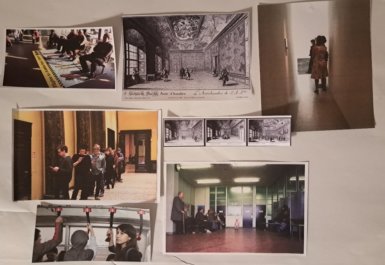
When positioned in proximity to one another, images of public waiting spaces prompt reflection on how their architecture contributes to the experience of waiting. Several scholars have explored waiting as a tool of power. In this context, montages can help foster a closer engagement with how the materiality of spaces and objects configures waiting, embeds power relations and makes waiting individuals aware of their position relative to spaces whose thresholds they have crossed
Montage 3: Domestic waiting, gender and digital mediations
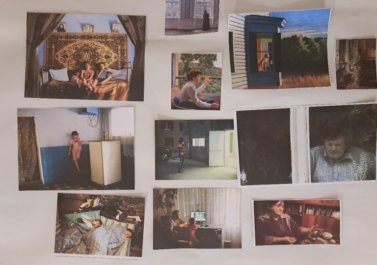
The third montage questions gendered narratives of waiting and domesticity. Some images depict women as passive figures, gazing through windows that symbolize thresholds between interiors as sites of non-events and external action. When these are arranged together with Andrea Diefenbach’s photos from the series Country Without Parents, showing Moldovan children waiting by phones or computers for news from their parents who work in Italy, they offer new avenues for reflection.
History of Palestinian Planning with maps and images
The Military Orders
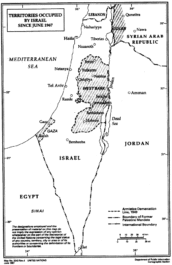 Map No. 3243 Rev 4, Territories Occupied by Israel Since June 1967, United Nations, June 1997
Map No. 3243 Rev 4, Territories Occupied by Israel Since June 1967, United Nations, June 1997
On 1 June 1967, the Israeli military issued its first Military Order, declaring the Gaza Strip and the West Bank as closed military areas. Military Order No. 2 imposed martial law on the West Bank and transferred all legislative, executive, and administrative powers of the Jordanian government to successive Israeli military commanders. Under strict adherence to the Fourth Hague Convention, existing laws could not be altered.
 Survey of Palestine 1944, 1:250,000 Sheet 2 (partial crop).
Survey of Palestine 1944, 1:250,000 Sheet 2 (partial crop).Survey of Palestine 1944, 1:250,000 Sheet 2 (partial crop).[/caption]As the occupying power, Israel inherited maps, plans, land laws, and regulations from the Ottoman, Jordanian, Egyptian, and British Mandate periods, spanning over 150 years. Israel immediately began enforcing a stringent military regulatory regime that referenced—but never overruled—existing legal frameworks. Within the first decade of occupation, two parallel strategies emerged: the adoption of most existing laws through Military Orders (MOs), and the centralization of administrative authority under the Area Commander. Palestinians were swiftly stripped of legal and civil rights previously guaranteed under British and Jordanian administrations.
 Survey of Palestine 1942–1958, 1:100,000 maps, Survey Department of Palestine Israel enacted Military Order No. 418, titled Order Concerning the [Jordanian] Law for Town, Village, and Building Planning (1966).
Survey of Palestine 1942–1958, 1:100,000 maps, Survey Department of Palestine Israel enacted Military Order No. 418, titled Order Concerning the [Jordanian] Law for Town, Village, and Building Planning (1966).
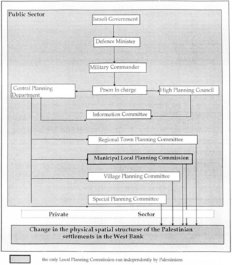 Institutional Arrangements of the Israeli Physical Planning System in the West Bank, Abdel Rahman Abdel Hadi Mahrok (1995, p.126, Fig. 8.2)
Institutional Arrangements of the Israeli Physical Planning System in the West Bank, Abdel Rahman Abdel Hadi Mahrok (1995, p.126, Fig. 8.2)
Through MO 418, Israel effectively excluded Palestinians from planning processes. Over the following decade, Israel issued additional military orders—albeit more slowly—that restricted spatial planning practices to Israeli military personnel only.
Research Office
Me, Amanullah Mojadidi. Who I am…
I received a BA in the late 1990s and an MA in the early 2000s, both in cultural anthropology. I subsequently spent the next 20 years working both as a conceptual artist and a development worker in support of contemporary artistic initiatives in Afghanistan, before returning to academia to pursue a PhD, once again in cultural anthropology. My approach in using anthropology to make art has been to listen to local communities to understand what issues are important to them and then to work with them on defining not only what to represent, but how to represent it. This approach can be seen as falling within what George Marcus has termed “para-ethnographic”, a process in which the ethnographer (or the artist) is “allied with the subject as intellectual partner in coming to terms with the understanding of a shared common object of curiosity” (Holmes and Marcus 2020:29).
Research Office. Geneva Graduate Institute
